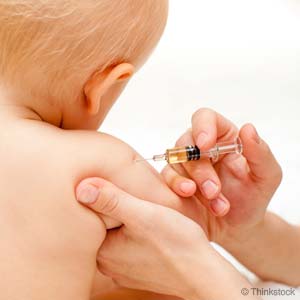PRK is an out-patient procedure typically performed with local anesthetic eye drops. The surgery only takes a few minutes during which an excimer laser (an extremely precise, computer-controlled ultra-violet beam of light) reshapes the cornea (the clear covering of the front of the eye) by removing microscopic amounts of tissue from the outer surface.
Prior to surgery the patient's eye is measured to determine precisely the degree of visual problem. The required corneal change is calculated and entered into the laser computer.
This procedure is available in Pakistan but with advances made in LASIK technology, especially over the past couple of years, it has become almost obsolete.
LASIK is a more complex procedure than PRK. It is performed for all degrees of myopia (near sightedness). A well-qualified surgeon uses a microkeratome knife to cut a flap in the cornea and a hinge is left at one end of this flap. The flap is folded back revealing the stroma (the middle section of the cornea). Pulses from a computer-controlled excimer laser vaporize a portion of the stroma and the flap is replaced.
Although some new lasers for eye surgery are currently being tested abroad, both PRK and LASIK are readily available in Pakistan at varying prices. LASIK is the preferred choice for most patients but an initial consultation can determine which procedure best suits an individual patient. The professional competence of the surgeon is critical.
You may be a good candidate for laser eye surgery:
* if you are at least 18 years of age and your eye prescription has stopped changing
* if you have mild to moderate myopia within the treatable range (which can be determined by your personal ophthalmologist)
* and if you have healthy eyes free of retinal problems, corneal scars and any eye disease.
In Pakistan, the fees for operation vary dramatically starting as low as Rs5,000 per eye to as high as Rs48,000 for both eyes, depending on the reputability of the clinic and doctor as well as the suitability of the patient. Although abroad some clinics offer free LASIK consultation, at most places in Pakistan there is an initial consultation fee ranging from Rs150 to Rs580.
Discomfort, if any, is minimized by the anesthetic eye drops placed in the eye prior to the procedure. However, many patients sense a scratchy feeling during the procedure and some are sensitive to light for a few days. Once the anesthetic drops’ effect wears off, the amount of discomfort varies with each individual but usually disappears within a few hours.
Most people can return to work within three days following the procedure. But this usually varies from patient to patient. Most patients resume regular activities the day following surgery.
The precision of the corneal change measurement is critical to the success of the procedure. A patient generally has to stop wearing contact lenses for several weeks prior to the surgery and the amount of time is usually determined by the doctor during initial consultation.
According to international collective results and US clinical trials, the treatment appears to be permanent. However, as people age their eyes change and re-treatment may be necessary.
Recovery time is generally minimal and typically the patient can be escorted home after 30 minutes. An improved sight is generally noticed three to five days after surgery.
Usually, the doctor operates both eyes on the same day. This should be decided after having a discussion with him.
The reputation of the surgeon, his or her experience with the procedure involved, and the condition of a patient's eyes are the more relevant factors not the country in which the clinic is located.
Risk factors:
Although the chances of complications following the procedure are relatively minimal, there are risks involved, including but not limited to the following:
Infections and delayed healing (PRK or LASIK): With PRK, there is about a 0.1 per cent chance of the cornea becoming infected, and an even smaller chance with LASIK. However, infection generally means added discomfort and a delay in healing, with no long-term effects within a period of four years.
Under-correction/Over-correction (PRK or LASIK): It is possible a patient may still need corrective lenses after the procedure to improve vision. Sometimes, a second surgery can be done to improve the result.
Flap damage or loss (LASIK only): There is a remote chance that the entire corneal flap could come off by mistake, but it is usually easily replaceable unless lost or damaged.
Distorted flap (LASIK only): Irregular healing of the corneal flap could create a distorted corneal shape, decreasing an optimal result.
Regression (PRK or LASIK): In some patients, the effect of refractive surgery is diminished over a period of time. Re-treatment is usually possible.
Halo effect (PRK or LASIK): The halo effect is the most common side effect from laser eye surgery. It refers to an optical effect that is noticed in dim light. In other words, at night, the patient sees a moon-like halo surrounding objects. This effect can often interfere with driving at night.
Incomplete procedure (PRK or LASIK): There is always the remote possibility that the computerized laser will malfunction or breakdown during the procedure. This, of course, is more of a risk with LASIK due to its more complex nature.

















